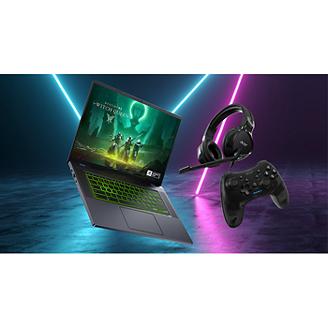-
EU Moves to Regulate Microtransactions in Games, Will They Succeed?
The European Union is considering sweeping new rules that could restrict or even ban microtransactions in video games, a move that has ignited fierce debate among developers, players, and regulators alike. These proposed changes stem from the EU’s Digital Fairness Act, which aims to eliminate manipulative in-game purchases and deceptive systems disguised as virtual currency.
What began with a complaint about the Swedish horse game Star Stable has evolved into a continent-wide discussion about transparency, consumer protection, and whether governments should decide how games make money. Supporters see this as a long-overdue pushback against pay-to-win mechanics, while critics warn that it could cripple Europe’s thriving game industry. As the EU moves closer to finalising the law, one question remains: can it actually succeed where others have failed?
What is the EU trying to do and why?
The European Union’s new proposal, introduced under the Digital Fairness Act, aims to reform how microtransactions are presented and purchased in video games. The goal is not necessarily to outlaw microtransactions entirely, but to prevent deceptive systems that disguise real-money spending through virtual currency such as gems, coins, or credits. Regulators argue that players, especially children, are often misled about how much they are truly spending when in-game purchases use indirect currencies instead of showing real prices in euros.
Under the proposed framework, all in-game purchases would need to clearly display their value in real money, provide accessible refund options, and remove manipulative elements such as “limited time offers” or fake discounts. The EU’s Consumer Protection Cooperation Network has specifically targeted practices that prey on player psychology, including pay-to-win systems where players gain competitive advantages through purchases.
According to EU officials, these rules are designed to protect consumers, particularly younger audiences, from being exploited by aggressive monetisation tactics. While few dispute the goal of consumer protection, the gaming industry warns that the proposed changes could upend how modern free-to-play games are designed and monetised across Europe.
How virtual horses started it all
The EU’s effort to regulate microtransactions began with an unlikely source: a Swedish online horse game for children called Star Stable. Parents complained that the game encouraged kids to buy in-game virtual currency without understanding how much real money they were spending. What looked like small digital purchases of “Star Coins” often turned into significant credit card bills, which prompted the EU’s Consumer Protection Cooperation Network to take action.
This case laid the groundwork for the Digital Fairness Act and its new focus on transparency. Lawmakers argued that if virtual currency can be exchanged for items or gameplay advantages, it should be treated as a financial transaction rather than a harmless feature. Their reasoning was simple: if players spend real money, they deserve the same clarity and consumer rights as any other buyer.
While Star Stable may have triggered the debate, the idea of charging players for digital extras is nothing new. The first major example was the Oblivion Horse Armor DLC released in 2006, when Bethesda offered a small cosmetic upgrade for $2.50. It was mocked at the time, yet it opened the door for a business model that evolved into modern microtransactions, loot boxes, and pay-to-win systems.
From a children’s horse game to a continent-wide legislative push, the history of microtransactions shows how quickly small design choices can reshape an entire industry.
How the EU gaming industry is responding
Europe’s gaming industry has not taken these proposals lightly. Major developers, including Supercell, have warned that the new rules could fundamentally change how free-to-play games operate in the region. In an open letter, Supercell’s CEO argued that the Digital Fairness Act would “break how many games fundamentally work” by forcing companies to replace token-based economies with real currency listings for every in-game item.
Developers say the shift would not only complicate the player experience but also harm one of Europe’s few global tech success stories. They argue that systems using virtual currency, such as buying tokens in bulk, exist to make transactions smoother and to reduce repeated small payments. In their view, the new system would require constant parental approval, individual pricing for every transaction, and an unrealistic level of compliance for developers.
Several major trade bodies, including the European Game Developer Federation, have echoed these concerns. They warn that excessive regulation could hurt smaller studios that lack the resources to adapt, leaving only large publishers able to comply. Critics also worry that this could push developers toward other forms of monetization such as in-game advertising, which may create new problems for user privacy and enjoyment.
Despite these warnings, few in the industry deny that something must change. Even companies opposed to the proposals admit that the current model of psychological triggers, time-limited offers, and opaque pricing has gone too far. The question now is how to reform these systems without stifling creativity or driving developers out of Europe altogether.
What gamers think about it
Public opinion among gamers has been far more divided. Many players welcome the EU’s intervention, seeing it as a long-overdue step toward curbing manipulative design and pay-to-win mechanics. For years, players have criticized how modern games pressure users into spending money through fake discounts, fear-of-missing-out events, and hidden costs behind virtual currencies. These systems often blur the line between entertainment and exploitation, especially in mobile and free-to-play titles.
At the same time, some gamers worry that government regulation could overreach and limit creative freedom. They argue that not all microtransactions are harmful and that optional purchases, such as cosmetic skins or expansion packs, help developers fund ongoing support for their games. Others note that some of their favorite titles, like Clash of Clans, might not survive if every purchase required direct euro pricing and new layers of legal approval.
Across forums and social media, the debate reflects a growing tension between fairness and freedom. Players are frustrated with the state of monetization, yet cautious about what happens when politicians step in to “fix” it. While many still remember the backlash to the Oblivion Horse Armor DLC as the moment this issue began, few can agree on what a fair system looks like today. For most gamers, the hope is simple: more transparency, less manipulation, and a gaming experience that rewards skill rather than spending power.
Will the EU actually succeed?
Whether the EU can successfully eliminate or regulate microtransactions remains uncertain. The Digital Fairness Act is still moving through consultation stages, and several EU bodies disagree on how to define virtual currency in the first place. Some legal experts argue that in-game tokens should be treated as digital goods, similar to downloadable content, while others want them classified as a financial instrument subject to the same scrutiny as real money. Until that distinction is clear, enforcement will remain inconsistent across member states.
Even if the Act passes, implementation could take years. Large publishers like Supercell and Ubisoft have the resources to adjust, but smaller studios may struggle to comply with complex transparency and refund requirements. This could lead to fewer indie releases and even drive some companies to withdraw from the European market altogether. A similar pattern occurred after the introduction of GDPR, when compliance costs forced many small websites and services to shut down within the EU.
Despite these challenges, the pressure for reform is unlikely to fade. The rise of manipulative monetization and pay-to-win systems has already eroded public trust in many gaming companies. If the EU’s efforts can restore that trust by making microtransactions clearer, more honest, and less exploitative, it may set a new global standard for digital consumer protection. However, if the legislation becomes too burdensome or fragmented, it risks repeating the same mistakes, a well-intentioned policy that ends up punishing both players and developers.
For now, the debate over microtransactions continues to reflect a broader question facing the gaming world: should fun be earned through gameplay, or bought with money disguised as gems and tokens?
Recommended Products
Predator X39 Curved Gaming Monitor
Buy Now
Acer Nitro 60 (RTX 5070 Ti)
Buy Now
Predator Orion 7000 (RTX 4080)
Buy Now
-
5 Best Curved Entertainment and Gaming Monitors From Acer
This article will discuss some of the pros and cons of a curved monitor, why you should buy one, and then introduce five of the best Acer curved monitors. Curved monitors have been around since 2013, and have a slight curvature that mimics the curve of the human eye. They offer viewers a more immersive experience by filling our peripheral vision and directing our eyes towards the center, which is more comfortable than staring at a flat screen. These monitors are particularly popular in the gaming world because they deliver a more lifelike experience while increasing the field of view, which allows gamers to see more at once.
What are the benefits of a curved monitor?
Almost everyone will have used a flat monitor at some point in their lives, but is it really worth switching to a curved one? Here are some reasons why you might consider switching to a curved monitor.
1. Creates a cinematic experience
One of the main advantages of curved monitors is their enhanced field of view, which delivers an immersive and cinema-like experience without any additional effort from the viewer. This also creates a competitive advantage when gaming, as users can detect opponents from all angles, including the sides, without moving their head.
2. Enhanced eye comfort
Curved monitors direct light from all angles towards our eyes, so we can watch our favorite shows without putting unnecessary strain on our eyes. In comparison, flat monitors can cause eye strain and fatigue during long gaming sessions or when binge-watching our favorite show because our eyes must constantly refocus to view the whole screen.
3. Less glare
Although glare can affect screens of all types, curved monitors have an advantage when handling glare. Curved monitors can deflect some reflections away from our eyes, consequently reducing annoying glare from lights or windows. In contrast, reducing glare on flat screens relies on where they are positioned.
What are the downsides of a curved monitor?
By now you may be seriously considering a curved monitor, so it is only fair that we cover some of the potential downsides.
1. Viewing angle limitations
As mentioned, curved monitors offer an excellent viewing experience due to their curved appearance. However, finding the optimal viewing position can be challenging, especially when watching the screen with a group. Curved monitors are best viewed from a central position, meaning people watching from the sides may experience image distortion. If you frequently watch movies, game, or collaborate on documents with multiple people, then a flat monitor may be a better choice.
2. Distortion
One major downside of curved monitors is the potential for distortion, which can alter the text and images at the screen's edges and impact precision. As such, curved monitors may be unsuitable for graphic design or artistic tasks that require a high level of accuracy. These users may therefore prefer a flat screen with an undistorted view.
3. Incompatibility with some games and content
Although most modern games have a wider viewing angle, some older games, applications, websites and content may not be optimized for curved displays. This can lead to distorted visuals or inconsistencies and can impact the overall viewing experience.
Our top 5 Acer curved computer monitors
Now that we have covered the pros and cons of curved monitors, here are our top 5 picks from the Acer range.
1. Acer EI2 Curved Entertainment Monitor
This stunning 31.5 inch (80 cm) curved screen offers a Wide Quad High Definition (WQHD) display resolution of 2560 x 1440 for sharper image quality. It has a 1 ms response time which reduces motion blur, and a refresh rate of 165 Hz, making it an ideal companion for casual gaming. This curved LED monitor also has a brightness of 400 nits for unrivaled quality visuals.
* Horizontal / vertical viewing angle: 178°
* Tilt angle: -5° to 15°
* Standard refresh rate: 165 Hz
* Color supported: 16.7 million colors
* Contrast ratio: 100,000,000:1
* Native contrast ratio: 3,000:1
* Speakers: 2
* Ports: HDMI 2.0 x 2, headphone jack, DisplayPort
* Max. power supply wattage: 68 W
* Operating power consumption: 45 W
* Height with stand: 19.93 inches (50.62 cm)
* Width with stand: 28.06 inches (71.27 cm)
* Depth with stand: 9.03 inches (22.93 cm)
* Weight with stand: 15.59 lb (7.07 kg)
The Acer EI2 Curved Entertainment Monitor is available for USD $199.99 on the Acer store, or USD $169.99 with a 15% student discount.
2. Acer Nitro EDA3 Curved Gaming Monitor
The Acer Nitro EDA3 Curved Gaming Monitor is designed for gaming and includes an ultra fast refresh rate to streamline every move. Its 16:9 aspect ratio delivers high-quality images in minute detail, while the zero-frame design maximizes screen real estate for an enhanced gaming adventure. This LED gaming monitor has a refresh rate of 144 Hz with HDMI 2.0, and 180 Hz with Display Port, along with a 1 ms VRB response time. It also supports AAMD FreeSync Premium, making it an ideal choice for gamers.
* Horizontal / vertical viewing angle: 178°
* Tilt angle: -5° to 20°
* Standard refresh rate: 144 Hz with HDMI 2.0; 180 Hz with Display Port
* Color supported: 16.7 million colors
* Contrast ratio: 100 Million:1
* Brightness: 250 Nit
* Screen resolution: 2560 x 1440
* Speakers: 2
* Ports: HDMI 2.0 x 2, headphone jack, DisplayPort
* Height with stand: 20.27 inches (51.48 cm)
* Width with stand: 27.93 inches (70.94 cm)
* Depth with stand: 7.84 inches (19.91 cm)
* Weight with stand: 10.8 lb (4.89 kg)
The Acer Nitro EDA3 Curved Gaming Monitor is available for USD $219.99 on the Acer store, or USD $186.99 with a 15% student discount.
3. AOPEN HC5 Curved Gaming Monitor
Next up is the AOPEN HC5 Curved Gaming Monitor that lets viewers enjoy top-quality high definition entertainment from the comfort of their gaming chair. Its crisp and lifelike colors add a touch of reality to games, and stay true to color no matter the viewing angle. This impressive curved LED monitor also supports AAMD FreeSync Premium, and has a 180 Hz refresh rate and a 1 ms response time.
* Horizontal / vertical viewing angle: 178°
* Tilt angle: -5° to 20°
* Standard refresh rate: 180 Hz
* Color supported: 1.07 billion colors
* Contrast ratio: 100 Million:1
* Brightness: 250 Nit
* Screen resolution: 3440 x 1440
* Speakers: 2
* Ports: HDMI 2.0, headphone jack, DisplayPort
* Max. power supply wattage: 68 W
* Operating power consumption: 45 W
* Height with stand: 19.45 inches (49.40 cm)
* Width with stand: 31.75 inches (80.64 cm)
* Depth with stand: 10.37 inches (26.33 cm)
* Weight with stand: 15.21 lb (6.90 kg)
Get yours for USD $299.99 from the Acer store, or USD $254.99 with a 15% student discount.
4. Acer EI4 UltraWide Curved Entertainment Monitor
With an impressive zero-frame design, 1800R curved screen, and cinematic 32:9 aspect ratio, the Acer EI4 UltraWide Curved Entertainment Monitor lets gamers dive fully into the gaming world. It has a refresh rate of 120 Hz (DisplayPort) or 60 Hz (HDMI) and a 4 ms response time. The 49 inch (124.46 cm) UltraWide curved LED display supports AAMD FreeSync Premium and lets gamers maximize their game’s full potential in unreal colors.
* Horizontal / vertical viewing angle: 178°
* Response time: 5 ms
* Tilt angle: -5° to 15°
* Standard refresh rate: 120 Hz (DisplayPort); 60 Hz (HDMI)
* Color supported: 16.7 million colors
* Contrast ratio: 100 Million:1 MAX (ACM)
* Brightness: Native: 350 nits; HDR400 Mode: Peak 400 nits
* Screen resolution: 5120 x 1440
* Speakers: 2
* Ports: HDMI 2.0, headphone jack, DisplayPort
* Height with stand: 17.2 - 20.94 inches (43.68 - 53.18 cm)
* Width with stand: 47.2 inches (119.88 cm)
* Depth with stand: 10.37 inches (26.33 cm)
* Weight with stand: 25.19 lb (11.42 kg)
This amazing curved gaming monitor is available for USD $899.99 from the Acer store, or USD $764.99 with a 15% student discount.
5. Predator X39 Curved Gaming Monitor
The Predator X39 Curved Gaming Monitor lets gamers immerse themselves in games on the 39 inch (99.06 cm) screen like never before. With a response time of 0.01 ms (PRT) or 0.03 ms (GTG) and a 240 Hz refresh rate, this curved OLED gaming monitor supports AAMD FreeSync Premium and opens up a whole new level of gaming.
* Horizontal / vertical viewing angle: 178°
* Response time: 0.01 ms - 0.03 ms (G to G)
* Tilt angle: -5° to 15°
* Standard refresh rate: 240 Hz
* Color supported: 1.07 billion colors
* Contrast ratio: 100 Million:1 MAX
* Brightness: Native: 1300
* Screen resolution: 3440 x 1440
* Speakers: 2
* Ports: HDMI 2.1, headphone jack, DisplayPort, audio line out, USB
* Height with stand: 22.84 inches (58.01 cm)
* Width with stand: 35.04 inches (89 cm)
* Depth with stand: 12.04 inches (30.58 cm)
* Weight with stand: 22.04 lb (9.99 kg)
Get yours today for USD $899.99 from the Acer store, or USD $764.99 with a 15% student discount.
So, should you buy a curved monitor?
Curved monitors offer comfort, reduced glare, and an immersive, cinematic experience that brings games and movies to life. These Acer curved gaming monitors each offer a unique set of features that make them an incredible gaming companion. From large screens to lightning fast response rates, there is an Acer curved gaming monitor to suit your needs. Check out the Acer website today to find yours, and grab an additional 15% student discount if eligible.
Recommended Products
Predator X39 Curved Gaming Monitor
Buy Now
Acer EI4 UltraWide Curved Entertainment Monitor
Buy Now
Acer Nitro EDA3 Curved Gaming Monitor
Buy Now
-
How to Restore the Classic Command Prompt in Windows 11
If you miss the old Command Prompt in Windows 11, this guide will show you exactly how to bring it back. Microsoft replaced the traditional Command Prompt window with the newer Windows Terminal, a modern interface that integrates Command Prompt, PowerShell, and other tools into a single environment. While Terminal offers customization and multi-tab support, many users still prefer the classic Command Prompt for its simplicity and familiarity. In this article, we’ll explain why the switch happened, and walk you through two easy methods to restore the legacy Command Prompt interface on Windows 11.
What is Windows Terminal and why Microsoft replaced Command Prompt
Windows Terminal is Microsoft’s modern command-line environment created for both developers and power users. It brings together several command-line tools, including Command Prompt (CMD), PowerShell, and Windows Subsystem for Linux (WSL), into one flexible interface. With features like multiple tabs, GPU acceleration, and customizable themes, Windows Terminal provides a smoother and more efficient experience compared to the traditional console.
To understand why Microsoft made the switch, it helps to look at a bit of history. The original Command Prompt dates back to the early 1980s and was based on MS-DOS, which served as the foundation of Windows for many years. As computing needs evolved, Microsoft introduced PowerShell in 2006, offering more advanced scripting and automation capabilities. By 2019, the company launched Windows Terminal to unify these tools into a single, modern application that could keep up with today’s development standards.
Still, not everyone has moved on. Many users prefer the old Command Prompt for its speed, reliability with legacy scripts, and familiar appearance. If you fall into that group, Windows 11 still gives you the option to bring the classic Command Prompt back with just a few simple settings changes.
How to restore the classic Command Prompt in Windows 11
There are two main ways to bring back the legacy Command Prompt interface. You can either change the default terminal application directly from Windows Settings or adjust the setting within the Windows Terminal app itself. Both methods are simple and reversible, so you can always switch back to Windows Terminal later if you prefer.
Method 1: Change the Default Terminal App in Windows Settings
* Click Start, then open Settings.
* Go to System and select For developers from the sidebar.
* Under Terminal, locate the option Default terminal application.
* Change it from Let Windows decide to Windows Console Host.
* Close Settings and reopen Command Prompt to confirm the change.
Tip: If you want to use Windows Terminal again in the future, simply change the setting back to Let Windows decide.
Method 2: Change the Default Terminal App Inside Windows Terminal
If you already have Windows Terminal open, you can switch back to the classic Command Prompt directly from its settings.
* Open Windows Terminal.
* Right-click on an empty area of the title bar and choose Settings.
* In the left-hand menu, select Startup.
* Under Default terminal application, change the option from Let Windows decide to Windows Console Host.
* Click Save, then close all open Terminal tabs.
* Reopen Command Prompt; it should now appear in the classic interface.
Tip: This method is handy if you frequently use multiple terminals and want to switch between them without opening Windows Settings.
How to Switch Back to Windows Terminal
If you ever decide to return to the modern Windows Terminal interface, the process is just as simple. You can reverse the setting using either Windows Settings or the Terminal app itself.
Option 1: Through Windows Settings
* Open Settings and go to System → For developers.
* Under Terminal, set Default terminal application back to Let Windows decide or Windows Terminal.
Option 2: Through the Terminal App
* Open Command Prompt or Windows Terminal.
* Right-click the title bar and choose Settings.
* In the Startup section, switch the Default terminal application option to Let Windows decide or Windows Terminal.
* Click Save and restart the app.
Your system will now use Windows Terminal as the default interface for command-line tools once again. This flexibility allows you to move between the modern Terminal and the classic Command Prompt whenever you like, depending on your workflow or preference.
Conclusion
Restoring the classic Command Prompt in Windows 11 is quick and easy, whether you adjust the setting through Windows Settings or the Terminal app. The legacy interface remains fully supported, making it ideal for users who prefer its simplicity, speed, or compatibility with older scripts. At the same time, Windows Terminal is still available for those who want advanced features like tabs, themes, and multi-shell integration.
If your computer doesn’t meet the requirements for Windows 11 or you want a smoother experience with the latest updates, consider upgrading to a new Windows 11 device from the Acer Store. Students can also save up to 15% through the Acer Student Discount Program.
Recommended Products
Acer Aspire 16 AI
Buy Now
Acer Aspire 14 AI
Buy Now
Acer Swift 14 AI
Buy Now
-
Best Budget Friendly Acer Laptops Under $700
Following the recent Windows 10 EOS (End of Service), today we’re in search of the best budget laptops for under $700. Are you lost online, looking for a solid budget laptop? Well finding a good laptop on a budget shouldn’t feel like a long ride through the badlands of online shopping in search of a bounty that may not exist.
Budget friendly Acer laptops that run Windows 11 come in a few different shapes and sizes, and we’ve handpicked four top notch budget laptops for you to choose from. Before we get into all that jazz, we’ll cover the Windows EOS and a brief overview of budget laptops.
Windows 10 EOS = time for a new laptop?
In case you missed the memo, Windows 10 reached its end of support on October 14, 2025. To be blunt: PC users of the world still clinging to the old OS are riding on borrowed time. No more updates, no more patches, just a dusty trail of security risks ahead.
If you’ve been holding off on upgrading, act now before it's too late. Now’s the time to saddle up for a budget laptop that’s Windows 11 ready, so you can keep your data safe and your wallet intact for a bright future of computing! Now, let’s take a closer look at those budget laptops for under $700.
1. Acer Aspire Vero Green Laptop
In the market for a mean green machine that blends eco-conscious design with state-of -the-art computing power? Acer Aspire Vero Green Laptop - AV15-53P-52PG is a cypress green beauty that’s recently been reduced from $699.99 to $549.99. This Acer Aspire Vero Green series laptop is an eco-focused PC constructed with recycled materials, including PCR plastics, designed with ease of recycling and upgrades in mind.
Underneath the distinctive speckled chassis, you’ll find an Intel Core i5-1335U processor (10-core, 1.30 GHz base clock). This CPU is ultra-efficient for multitasking, streaming, light editing, and office productivity on Windows 11 Home OS. The Acer Aspire Vero Green laptop features integrated Intel Iris Xe Graphics, a super integrated GPU for casual creative tasks, FHD video playback, as well as light gaming.
Green credentials don’t mean that this laptop’s display is foggy. 15.6 inch Full HD (1920 × 1080), 16:9 ratio with a solid 60 Hz refresh rate delivers a sharp, reliable visual experience for work, study and even a spot of light gaming. Let’s not forget the memory: 8 GB LPDDR5 means fast, low-power memory suitable for smooth daily performance. Storage wise 512 GB SSD ensures rapid boot times, quiet operation, and of course plenty of space for all your apps, documents and media.
2. Acer Chromebook Spin 514
Moving swiftly on, let’s take the Acer Chromebook Spin 514 - CP514-3HH-R6VK for a spin! Currently only $699.99, this Chromebook is not to be sniffed at! Forgetting the Windows EOS for a second, Chrome OS is the increasingly popular lightweight, nearly instant-booting system with built-in Google Workspace and Android app support. This highly portable 14 inch laptop is a versatile, no-nonsense touchscreen device that’s ready to roll.
The Acer Chromebook Spin 514 is powered by an AMD Ryzen 5 5625C processor (6 cores, 2.30 GHz). This highly efficient mid-range CPU is optimized for Chrome OS, delivering strong multitasking for cloud apps, video calls, streaming, and even light gaming. Bearing in mind that this laptop is built around cloud computing, the Acer Chromebook Spin 514 doesn’t need bags of local memory or storage as most apps and files live safely online in Google Drive. That said, the laptop features 8 GB LPDDR4X RAM as well as 128 GB storage. Perfectly adequate, wouldn’t you say?
Flexibility is king with the Acer Chromebook Spin 514: 14-inch Full HD (1920 × 1080) touchscreen offers razor sharp visuals with responsive multi-touch input.
16:9 aspect ratio is standard widescreen size for productivity, streaming, and even presentations. And let’s not forget what put the “spin” in the Acer Chromebook Spin 514. The versatile 360° hinge enables laptop, tent, stand, or tablet mode for adaptable work and play.
3. Acer Aspire Go 15 Laptop
We remain aspirational as we meet our next laptop, the Acer Aspire Go 15 Laptop - AG15-71P-59PZ. Get going with this beauty from Acer’s Aspire Go line, a steady workhorse that delivers everyday reliability, simplicity and value to users who require dependable performance without breaking the bank. Before we forget, this laptop currently has a tasty price tag of only $629.99.
Stylish pure silver color chassis encases a powerful Intel Core i5-13420H processor (8 cores, 2.10 GHz base). This is a higher-powered chip from Intel’s H-series, delivering stronger performance than U-series chips for demanding multitasking and heavier workloads. Ultra-efficient Intel UHD Graphics with shared memory has got you covered for everyday computing, streaming, light creative tasks and low-impact gaming adventures.
This is another Acer laptop with a highly respectable display: 15.6 inch Full HD (1920 × 1080), IPS panel for wide 178° viewing angles with a 60 Hz refresh rate, perfect for work, study, and entertainment. With your viewing comfort in mind, Acer has added ComfyView (matte) coating to reduce glare for clearer visibility in bright environments. The Acer Aspire Go 15 laptop doesn’t skimp on memory or storage: 16 GB DDR5 SDRAM provides strong memory capacity for multitasking and productivity, while 512 GB SSD means fast and quiet storage with quick load and boot times.
4. Acer Aspire Vero 16 Laptop
Last but certainly not least on our grand tour of the best budget friendly Acer laptops under $700, meet the Acer Aspire Vero 16 Laptop - AV16-51P-5641. Recently reduced from $749.99 to $649.99, this is another Acer laptop with eco-friendly aspirations. Future proof thanks to Windows 11, and infused with AI hardware and productivity-positive design, this is a large format 16 inch laptop that’s ready when you are.
Powered by an Intel Core Ultra 5 125U processor (12 cores), this is an ultra-efficient AI-ready chip tailored for multitasking, streaming, and productivity with improved power management throughout the device. As you’d expect, integrated Intel graphics handle everyday productivity as well as light creative tasks and less-demanding gaming exploits.
Users requiring slightly more screen real estate can rest assured, as the Acer Aspire Vero 16 has a 16-inch WUXGA (1920 × 1200) panel, providing extra vertical space (16:10 ratio) for all your computing needs. As you’d expect, IPS technology delivers wide viewing angles and consistent color, while the 60 Hz refresh rate handles work and casual media use with ease. This model has double the memory of the Acer Aspire Vero Green Laptop: 16 GB LPDDR5X RAM, with 512 GB SSD storage for all your documents and media.
Budget-friendly, future-proof choices
We hope that you’ve enjoyed our foray into the best budget friendly Acer laptops under $700. From the eco-minded grit of the Aspire Vero Green Laptop to the steady dependability of the Aspire Go 15, the flexible Chromebook Spin 514, and the forward-looking Aspire Vero 16, Acer’s got a full posse of budget-friendly machines boxed up and ready to ride.
Each one hits a different trail for every unique user: green design, everyday power, cloud convenience, or next-gen performance. What unites these beasts is that they all share the same goal: giving you solid value without losing your shirt. The badlands of online shopping can rest easy, your bounty’s right here at the Acer store, with a whopping 15% student discount awaiting!
Recommended Products
Acer Aspire Vero Green Laptop
Buy Now
Acer Aspire Go 15
Buy Now
Acer Aspire Vero 16
Buy Now
-
Best Acer Laptop Backpacks and Sleeves in 2025
Laptop backpacks and sleeves are an important accessory that protect your device from bumps and scrapes as you travel or commute, and this article will introduce five of the best Acer laptop backpacks and sleeves for 2025. As laptops are probably one of the priciest gadgets we own, it is wise to invest in a good quality case. A flimsy laptop backpack or sleeve may not offer adequate protection, so it is crucial to check and compare before you buy. A sturdy case safeguards laptops from accidental drops and scratches, and includes handy pockets to store accessories and the charging cable. Let’s take a look at some of Acer’s top picks.
1. Acer Vero ECO Protective Sleeve
Made from 100% recycled materials, including recycled plastic bottles, the Acer Vero ECO protective sleeve protects your laptop and the environment. This sleek laptop sleeve fits most 15.6 inch (39.62 cm) laptops or Chromebooks, offering versatility and durability for users looking for an additional protective layer. It also includes a front zipper pocket for accessories like a mouse or charging cable.
* Height: 11.2 inches (28.44 cm)
* Width: 15.7 inches (39.87 cm)
* Depth: 0.6 inches (1.52 cm)
* Weight: 5.93 oz (0.16 kg)
Get yours today for USD $39.99 on the Acer store, or USD $33.99 with a 15% student discount.
2. Acer Travel Backpack
This ultra-slim backpack is lightweight and stylish, safeguarding your laptop or tablet from whatever the day brings. It includes cushioned back support and padded shoulder straps for extra comfort and support, and has a water-repellent exterior for all weather. With a top handle for easy transportation and additional inner organizers for cables and accessories, the Acer Travel Backpack is an ideal carry case for notebooks up to 15.6 inches (39.63 cm) or tablets up to 10 inches (25.4 cm).
* Height: 18.5 inches (46.99 cm)
* Width: 12.6 inches (32 cm)
* Depth: 5.9 inches (14.98 cm)
* Weight: 5.93 oz (0.16 kg)
Buy it today for USD $39.99 on the Acer store, or USD $33.99 with a 15% student discount.
3. Predator Utility Lite Backpack
The Predator Utility Lite Backpack is a multi-function backpack that oozes ease and durability. It features dedicated sections for maximum storage and a standalone laptop compartment for devices up to 17 inches (43.18 cm) with a TSA-friendly opening for ultimate convenience. This impressive backpack also includes a splash-proof interior for accidental spillage.
* Height: 17.71 inches (44.98 cm)
* Width: 11.81 inches (29.99 cm)
* Depth: 5.11 inches (12.97 cm)
* Weight: 1.76 lbs (0.79 kg)
The Predator Utility Backpack is available for USD $129.99 on the Acer store, or USD $110.49 with a 15% student discount.
4. Predator Gaming Utility Backpack
This stylish black backpack with teal accents is ideal for safely transporting Predator gaming laptops. It features shoulder and chest straps for improved support, as well as a carrying handle for easy lifting. The Predator Gaming Utility Backpack is 17 inches (43.18 cm) deep, offering enough space for your laptop to sit comfortably.
* Height: 20.5 inches (52.07 cm)
* Width: 14 inches (35.56 cm)
* Depth: 8 inches (20.32 cm)
* Weight: 3.44 lbs (1.56 kg)
Get this stunning gaming backpack for USD $149.99 on the Acer store, or USD $127.49 with a 15% student discount.
5. Predator Robust Backpack
The Predator Robust Backpack is a multi-function backpack with three main compartments to organize your gear in style. It has a water-repellent exterior and reinforced corners for extra support during travel and commuting. The backpack’s dedicated sections let you store accessories like a mouse and a charging cable without overstuffing, and it also comes with a handy standalone laptop compartment up to 18 inches (45.72 cm) with TSA-friendly opening.
* Height: 18.5 inches (46.99 cm)
* Width: 12.99 inches (32.99 cm)
* Depth: 6.3 inches (16 cm)
* Weight: 4.29 lbs (1.94 kg)
This practical gaming backpack is available for USD $179.99 on the Acer store, or USD $152.99 with a 15% student discount.
Conclusion
Laptop backpacks and sleeves protect your device from scratches and bumps on the move, and offer a useful storage space when not in use. This article has explored our top Acer laptop backpacks and sleeves for all budgets and requirements, including gaming gear. They all include additional pouches and compartments for accessories, and are designed with usability and practicality in mind. Get yours on the Acer store today, and keep in mind that purchases are subject to a 15% student discount for eligible parties.
Recommended Products
Acer Vero ECO Protective Sleeve
Buy Now
Predator Utility Lite Backpack
Buy Now
Predator Robust Backpack
Buy Now
-
What Is the Windows Insider Program and Is It Worth Joining?
The Windows Insider Program is Microsoft’s official platform for users who want early access to upcoming Windows features, updates, and system improvements before they reach the public. In this article, we’ll explore what the Windows Insider Program is, how it works, and whether it’s worth joining. You’ll learn what benefits it offers, what risks to consider, and how to get started if you decide to take part in shaping the future of Windows.
What is the Windows Insider Program?
The Windows Insider Program is Microsoft’s official testing and feedback platform that allows users to preview upcoming Windows updates before they are released to the public. It was launched in 2014 alongside Windows 10 to help the company collect real-world feedback and refine new features through community testing. Participants, known as “Insiders,” receive early builds of Windows 10 or Windows 11 depending on the update channel they select.
https://www.youtube.com/watch?v=4M6NWf31jEA
There are several Insider channels, each offering a different balance of innovation and stability. The Canary Channel delivers the earliest experimental builds. The Dev Channel provides newer features that are more stable but still under development. The Beta Channel focuses on near-final versions that are closer to public release. Lastly, the Release Preview Channel offers access to upcoming updates that have already been tested and refined. Together, these channels help Microsoft test new features, collect telemetry data, and ensure compatibility across a wide range of devices before official release.
Purpose and benefits of the Windows Insider Program
The Windows Insider Program serves two main purposes. First, it allows Microsoft to test new features, system updates, and design changes in real-world conditions before a full release. Second, it gives users the chance to experience upcoming versions of Windows early and share feedback that directly influences how the operating system evolves. This approach helps Microsoft identify bugs, performance issues, and compatibility problems long before updates are rolled out to the general public.
For users, the program offers several key benefits. It provides early access to new features and interface improvements, which can be especially useful for developers, IT professionals, and technology enthusiasts who want to stay ahead of changes. It also allows participants to provide feedback through the Feedback Hub app, helping shape the final product. Businesses can use the Insider Program to test future builds in their environments, ensuring that software and hardware remain compatible with upcoming versions of Windows.
However, it is important to note that Insider builds are pre-release versions of Windows and can sometimes include bugs or unfinished features. As a result, Microsoft recommends using the program on a secondary PC rather than a primary work device.
Is the Windows Insider Program right for you, and how to join
The Windows Insider Program can be an exciting opportunity, but it is not suited for everyone. If you enjoy experimenting with new technology, do not mind occasional bugs, and have a spare computer to test early versions of Windows, then joining may be worthwhile. The program is ideal for developers, IT professionals, and users who want to preview new tools and help shape the operating system through feedback.
On the other hand, if you rely on your PC for work, study, or other essential tasks, you may want to avoid installing Insider builds. Preview versions can sometimes cause performance issues or break compatibility with certain apps and drivers. Stability varies by channel, so those seeking fewer issues should stick with the Beta or Release Preview channels instead of the more experimental Dev or Canary builds.
How to Join the Windows Insider Program
Joining the Windows Insider Program is simple:
* Open Settings on your Windows PC.
* Select Windows Update.
* Click Windows Insider Program from the sidebar.
* Sign in with your Microsoft account.
* Choose your preferred Insider channel (Canary, Dev, Beta, or Release Preview).
* Agree to the terms and conditions.
* Restart your device to apply the changes.
After your PC restarts, Windows will automatically download and install the latest Insider Preview build for your selected channel.
To share feedback or report bugs:
* Open the Feedback Hub app.
* Select the issue type and follow the prompts to submit your report or suggestion.
If you later decide to leave the Insider Program:
* Go back to Settings > Windows Update > Windows Insider Program.
* Choose to stop receiving preview builds, or reinstall Windows to return to the public release version.
* Always back up your data before switching builds to avoid losing files.
Conclusion
The Windows Insider Program gives users a unique way to explore the future of Windows and contribute to its development. By testing early builds and providing feedback, Insiders play a key role in helping Microsoft refine new features and improve system performance before public release. For those who enjoy discovering new tools and interfaces ahead of schedule, it can be an exciting and rewarding experience. However, anyone who depends on a stable, reliable system for work or study should consider staying on the official Windows release instead.
If you are still using Windows 10, remember that support will officially end soon. This makes now the perfect time to upgrade to a new Windows 11 device. You can explore the latest laptops and desktops on the Acer Store, where you will find a wide selection of powerful, Windows 11-ready computers designed for gaming, productivity, and creativity. Students can also enjoy up to 15% off through Acer’s Student Discount Program, making it easier and more affordable to stay up to date with modern Windows features and performance.
Recommended Products
Acer Aspire 16 AI
Buy Now
Acer Aspire 14 AI
Buy Now
Acer Swift 14 AI
Buy Now








